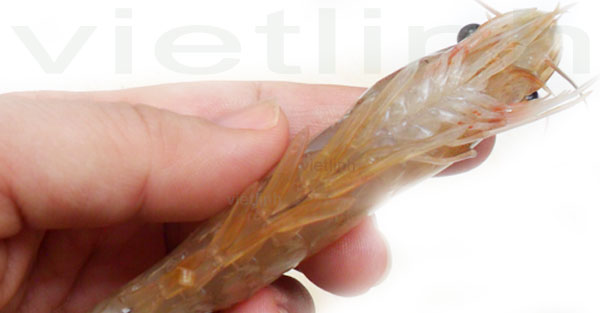
Acute Hepatopancreatic Necrosis Syndrome (AHPNS/AHPND), or Early Mortality Syndrome (EMS) often occurs in black tiger prawn (Penaeus monodon) and whiteleg shrimp (Litopenaeus vannamei).
Shrimp can be infected during the farming process, especially in the period of small shrimp to 45 day-old juveniles. The syndrome causes mass death in shrimp quickly.
Vibrio parahaemolyticus bacteria cause the disease. They form type of potent toxin that rapidly destroys tissues and creates hepatopancreatic dysfunction in shrimp digestive system. This is the cause of premature death in shrimp in the first 30 days after stocking. The mortality rate can be only at 70%.
Initially, the symptoms of this disease are not clear. Shrimp grows slowly, is lethargic, skips meals, swims around pond dikes, pond corners, or at the bottom of the pond. After that, shrimp starts to have soft shell, change color, and have soft, shrinking or swollen hepatopancreas.
To prevent this syndrome, according to Vietlinh, it is necessary to apply an integrated approach:
- Choose disease-free shrimp broodstock to prevent infection from broodstock to farmed shrimp.
- Make sure that shrimp, the environment, water resources, tools and equipment are clean.
- Use Formol 100 - 200ppm, for 30 seconds to 1 minute to choose healthy post-larvae, eliminate disease carriers and infected shrimp before stocking.
- Prepare and sterilize farming pond carefully before stocking: processing the pond bottom, let the pond expose to the sunlight (if possible); antisepticize pond. Carefully sterilize water supplied to the pond.
- Do not start farming in high density. Can intercrop with tilapia (farming in green water).
- Use high-quality feed without fungal infections; feeding supplemental vitamin C, A, E, and glucan.
- Manage good and stable pond environment by using probiotics.
- Limit the use of chemicals and antibiotics.
- Eliminating substances that are harmful to shrimp’s hepatopancreas, such as heavy metal ions, pesticides, etc.. These products are often sold in the market.
- Upon the occurrence of the disease in small shrimp, use disinfectants (chlorine, formalin) for disinfection and limit the infection in other shrimp.
- In the process of harvesting shrimp, conduct water treatment with disinfectants (chlorine, formalin) before releasing water outside to limit the spread of this disease.
Compiled by ©2015 Viet Linh